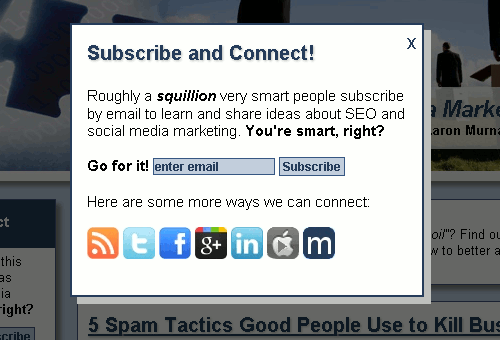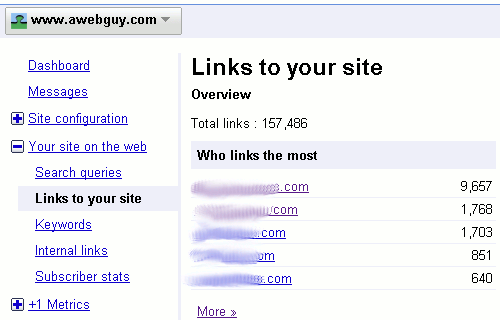
Do people complain differently online than they do to your face? In most cases, you bet they do! Let’s have a look at why that matters, and how you can turn bad online reviews from a frightening fact of life into a benefit. First, here’s a short and relevant story from real life. It is my online review of Applebee’s Neighborhood Grill & Bar in Topeka, Kansas.
My wife and I worked very hard through the week. I am a web guy, and she is Owner / Chef of Mad Eliza’s Cakes and Confections … working hard is what we do.
After a long work week, we decided that our kitchen at home was closed for the day. Without deciding on a destination, we packed the kids in the car and headed out for dinner. As we drove down what I would describe as “restaurant row” in our town of Topeka, Kansas, we decided to go to Applebee’s. We figured it would be a quick place to eat, with something to suit everybody from ages two to 39. We had not been to an Applebee’s restaurant in a long time, but it didn’t take long to realize why.
Perhaps I would be a lot harsher if I had not waited ten days to write this, but I’ll be generous to say that they did a fine job with the ice water. As for the steak, it was absolutely without a shadow of a doubt the worst piece of meat I ever saw on a plate. It was as if Applebee’s purchasing department found the toughest cow in the pasture, put it on a treadmill for a few months to get rid of any tenderness or flavor, and waited for it to die of old age. Then they took the sick joke even further and sent it to my local Applebee’s, cooked it to a charcoal briquette and put it on my plate!
That’s enough about the poor old cow … but how about that “baked” potato? It was cold … the way I asked for the steak. I could barely even cut it with the knife they gave me, and I am not exaggerating.
I hesitate to give an accurate Gordon Ramsay style critique, but mostly because I don’t want to curse that much on my blog … on a Monday. So, I made a video montage of Chef Ramsay to do the cursing at Applebee’s for me.
My wife suggested that I tell them about it, but I said … “I’m not going to be one of those people.” Of course, I followed it up by whipping out my phone, taking a photo, and saying “Nope … I’ll blog about it.” I am always looking for real-life experiences to blog about, so this opened the door to a topic of online reviews, and what could be better than a restaurant to demonstrate?
I don’t enjoy the personal confrontation, and I am not alone in this. Besides, if Applebee’s is running the kitchen that poorly, I can only imagine what kind of people are back there … and what they would do to my food if I told them they had done a bad job. Have you ever seen the movie “Waiting”? Here … watch this video “Why We Use Online Restaurant Review Sites“ to see what I mean.
Online Reviews Demonstrate How Customers Complain After They Leave
It may be easy to imagine that customers will exaggerate a complaint in an online review more than in person. There are surely instances of this, but the frightening reality is that people are often just being more forthright with their feelings of frustration.
It is easier to complain without company representation there trying to defend something that, as a customer in the heat of the moment, may seem indefensible. This holds true for both online and offline communications, but many people have come to expect less defensiveness from companies in online communications. One reason is because the company knows other people are watching, and another far worse reason is because the company is not watching.
Have you ever tried to complain to somebody who just didn’t seem to listen, or who did not give you the response you hoped for when you did complain? If you have ever encountered it, you surely know how aggravating that can feel. It is like an act of passive aggression, and it adds fuel to the fire. That is exactly how online complaints tend go, when companies are not listening. Here is the Wikipedia definition for passive–aggressive behavior:
It can manifest itself as learned helplessness, procrastination, stubbornness, resentment, sullenness, or deliberate/repeated failure to accomplish requested tasks for which one is (often explicitly) responsible.
Online Reviews Are Not Just for Consumers to Read
I find many instances of companies afraid to acknowledge their online reviews. I have heard people say things as absurd as “we cannot do anything about a negative review anyway” or “what if we respond to a review and people don’t like it?”
Being both a consumer, and a marketing strategist, I hope you can imagine how this makes my hair gray. What about the concern that these are customers who want to be heard, and deserve to be heard? What about the outcome if companies don’t respond … can they really somehow believe that people will like that any better?
Reviews are great for consumers. They may present their review as a compliment, as constructive criticism, or express their anger to a company where others can see it. In each case, they present opportunities for a company to come out better than before.
In some instances, a customer may just feel that their complaint is too petty to deliver in person, or they don’t feel like the outcome will be worth even the least confrontation. Of course, there is also the matter of hunting down and waiting for the right person to best direct the complaint. Have you ever waited for a manager in a store or restaurant, or waited on hold to tell your story? People really hate that, but online, there is no waiting to say your piece, and there are often other consumers there to cheer you on with a rant. This is especially the case if the company is not responding, or responds poorly.
An Upside to Bad Reviews
Even in the event of a dispute or a harsh criticism, there is a great opportunity to improve people’s opinion. Dispute resolution provides many chances to let people see your company in a completely new light. If you handle online reviews well, the opportunity for gain is even greater than offline communication. Then again, so is the loss … so it is important to get this right! Give it some thought before you react. Consider how others may feel. Whatever you do, don’t bury your head in the sand and act like you never saw it. That is pathetic, and that’s will just add fuel to an already destructive fire.
Try to look at it this way: Complaints are a customer’s way of giving you a chance to regain their faith and make them happy. Ignoring them is not the right answer.
I have just one more thing to add, before I leave you to write your comments and share this with others. Here is a closer look at that disgusting steak and potato that Applebee’s served. It does not quite look like the one in their menu.

Addendum:
At the “brilliant” urging of a commenter, Lori Smart, I decided to add a copy of my receipt from this visit to Applebee’s. After all, as she said, “there is no record at the location’s management that you were even a customer there”. Here is that record, complete with the server’s name.

Here is a photo of my three kids across the table from my horrid Applebee’s steak. After seeing that nasty piece of meat, my dear little Madeline had to force a smile through the fear. 😀

Podcast: Play in new window | Download















